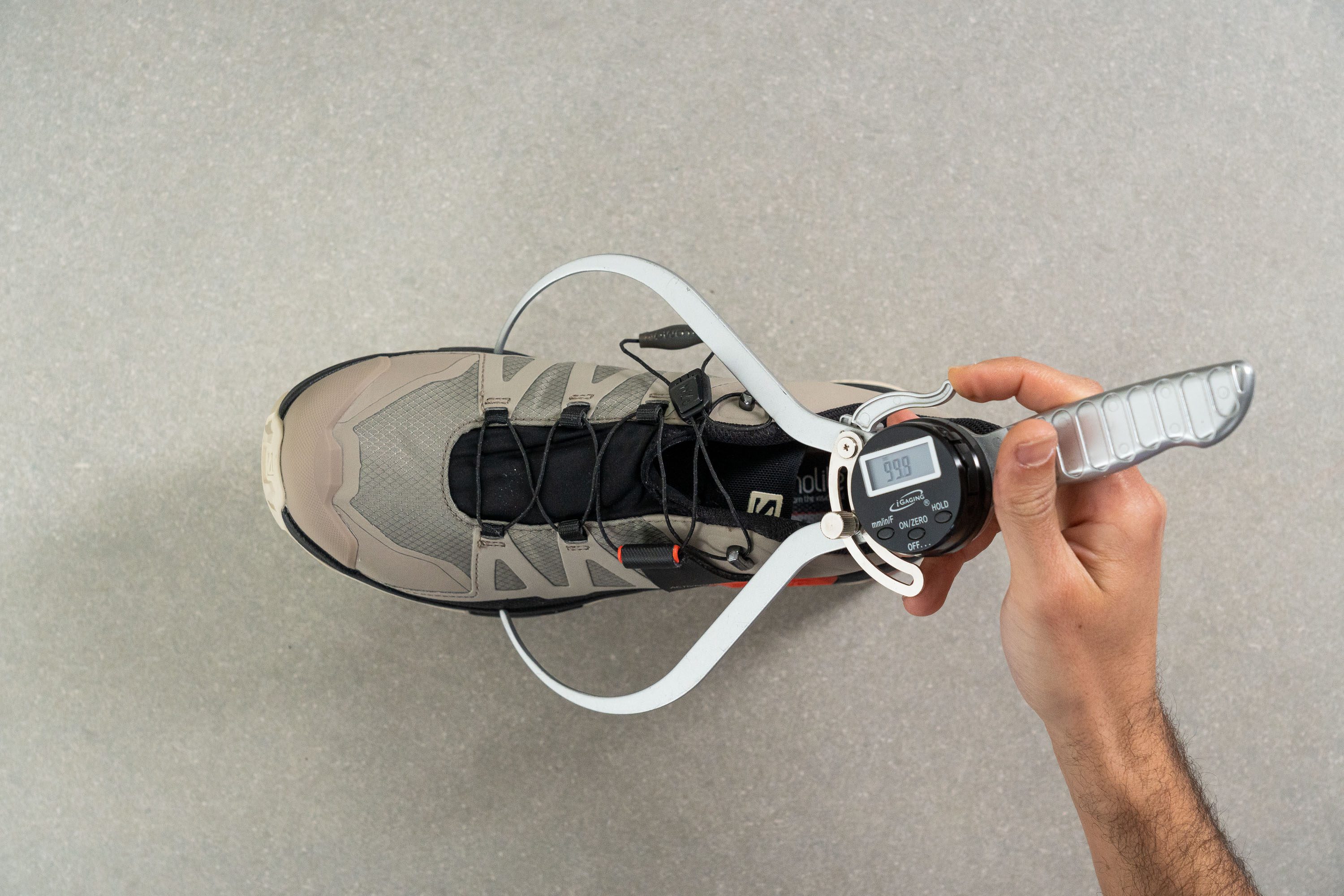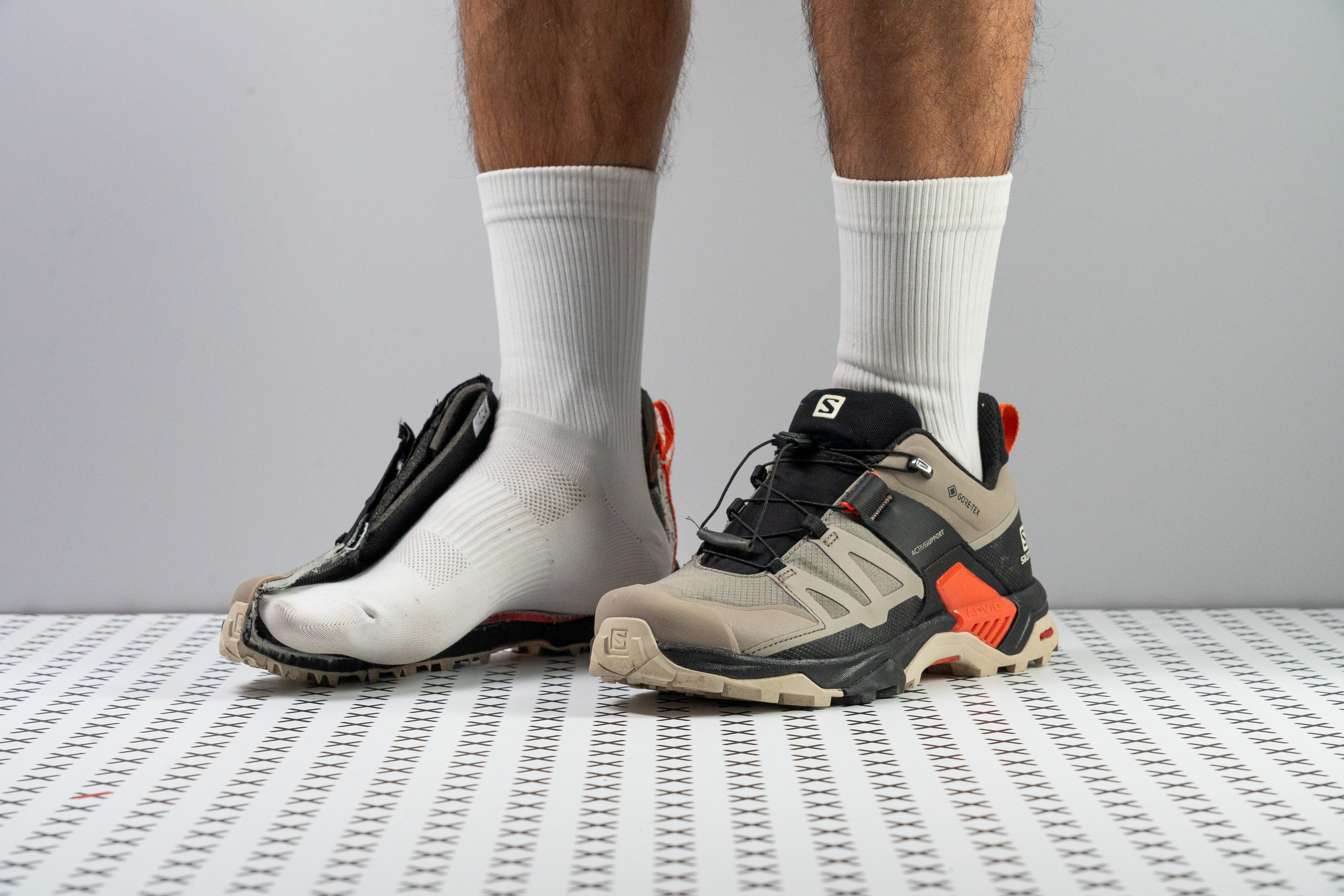Our verdict
- Top pick in best backpacking shoes
- Top pick in best Salomon hiking shoes
Pros
- Instant comfort
- Impeccable waterproofing
- Very lightweight
- Great grip for mixed terrain
- Excellent support and lockdown
- Stable platform
- True-to-size fit
Cons
- Minimal shock absorption
- Quicklace is not for everyone
- Too-high collar
Audience verdict
- Top 15% most popular hiking shoes
Comparison
The most similar hiking shoes compared
+ + Add a shoe | |||||
|---|---|---|---|---|---|
| Audience score | 80 Good! | 86 Great! | 86 Great! | 86 Great! | |
| Price | $160 | $209 | $160 | $160 | |
| Trail terrain | Technical | Technical | Technical | Technical | |
| Shock absorption | Low | Low | Low | Low | |
| Energy return | Moderate | Moderate | Moderate | Moderate | |
| Weight lab Weight brand | 13.3 oz / 378g 13.3 oz / 378g | 14.8 oz / 420g 15.5 oz / 440g | 17.1 oz / 486g 15.4 oz / 437g | 15.9 oz / 452g 15.9 oz / 452g | |
| Lightweight | ✓ | ✗ | ✗ | ✗ | |
| Breathability | Warm | Warm | Moderate | Warm | |
| Use | BackpackingDay HikingSpeed HikingSnow | BackpackingDay HikingSnow | BackpackingDay HikingSnow | Day HikingSnow | |
| Orthotic friendly | ✓ | ✓ | ✓ | ✓ | |
| Drop lab | 10.9 mm | 16.0 mm | 12.5 mm | 10.9 mm | |
| Size | True to size | True to size | True to size | Half size small | |
| Midsole softness | Firm | Firm | Firm | Firm | |
| Difference in midsole softness in cold | Big | Normal | Small | Big | |
| Torsional rigidity | Stiff | Stiff | Moderate | Moderate | |
| Heel counter stiffness | Stiff | Stiff | Moderate | Moderate | |
| Stiffness | Moderate | Moderate | Moderate | Moderate | |
| Outsole hardness | Hard | Average | Average | Average | |
| Waterproofing | Waterproof | Waterproof | Waterproof | Waterproof | |
| Material | - | Mesh | Leather | LeatherMesh | |
| Season | Winter | Winter | Winter | Winter | |
| Toebox durability | - | Decent | Very good | - | |
| Heel padding durability | - | Bad | Bad | - | |
| Outsole durability | - | Good | Decent | - | |
| Width / fit | Medium | Medium | Medium | Medium | |
| Toebox width | Medium | Medium | Medium | Medium | |
| Lug depth | 4.5 mm | 4.3 mm | 4.5 mm | 4.8 mm | |
| Heel stack lab | 30.9 mm | 39.1 mm | 29.5 mm | 33.2 mm | |
| Forefoot | 20.0 mm | 23.1 mm | 17.0 mm | 22.3 mm | |
| Widths available | NormalWide | Normal | NormalWide | NormalWide | |
| Technology | Gore-TexOrtholite | Gore-TexOrtholiteVibram | - | Gore-TexVibram | |
| Heel tab | Finger loop | Finger loop | Finger loop | Finger loop | |
| Removable insole | ✓ | ✓ | ✓ | ✓ | |
| Ranking | #27 Bottom 22% | #12 Top 35% | #15 Top 43% | #14 Top 40% | |
| Popularity | #5 Top 15% | #15 Top 43% | #18 Bottom 48% | #7 Top 20% |
Cushioning
Shock absorption
Born to be wild, the Salomon X Ultra 4 GTX prioritises surefooted steps and direct ground contact over plush cushioning. This explains the shoe's subdued shock absorption of only 89 SA.
You still get decent impact protection but this shoe is meant for technical terrain where trail awareness is essential.
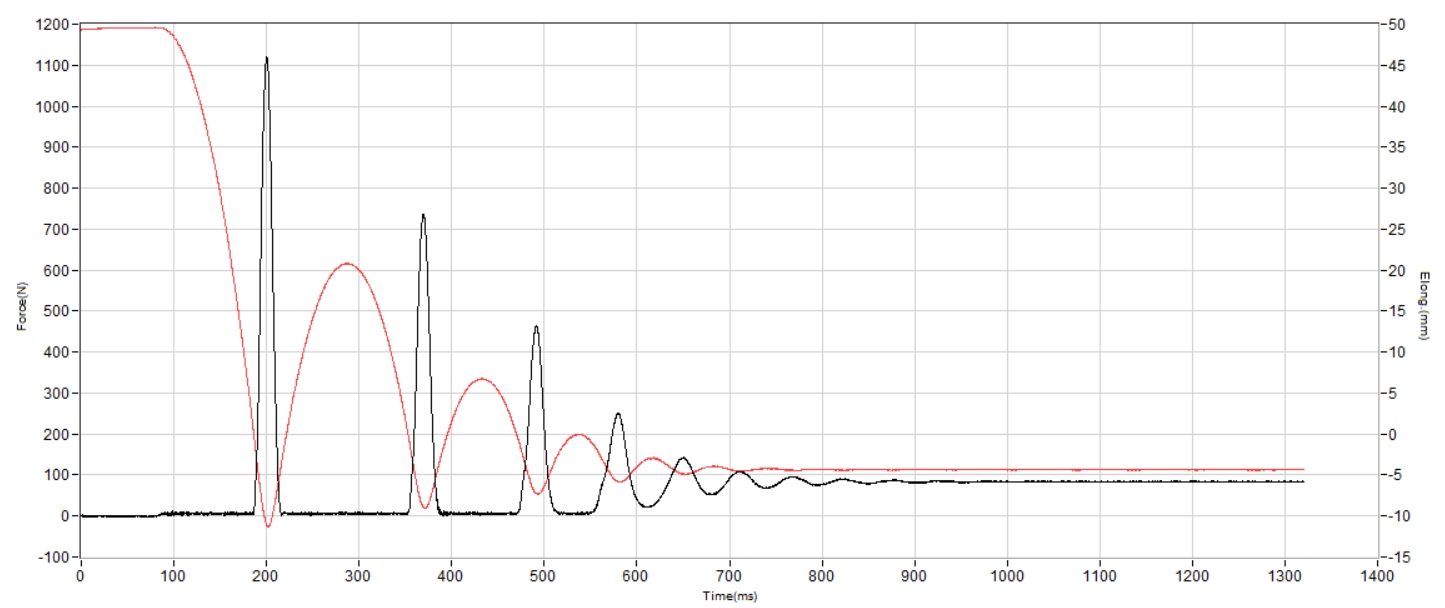
| X Ultra 4 GTX | 89 SA |
| Average | 104 SA |
Energy return
With a middle-of-the-road energy return of 49%, the X Ultra 4 GTX offers a balanced ride which is neither too dull nor springy. There is enough rebound to keep it dynamic without compromising stability and connection to the trail.
| X Ultra 4 GTX | 49.0% |
| Average | 50.2% |
Midsole softness
We also measured the shoe's foam softness with the help of a durometer.
At room temperature, it turned out to be right in the middle - neither plush nor firm.

| X Ultra 4 GTX | 32.5 HA |
| Average | 27.0 HA |
Size and fit
Size
Salomon X Ultra 4 GTX fits true to size (110 votes).
Width / Fit
To measure its dimensions as precisely as possible, we created a gel mold of this Salomon shoe's interiors in a men's US size 9 (D medium width).
We then used a digital caliper to measure the widest part of the mold (ball of foot area) and recorded it at 93.6 mm. That way, the X Ultra 4 GTX falls right into the medium-width range of hiking shoes.
It is also available in an alternative wide width for trail goers with wider feet.

| X Ultra 4 GTX | 93.6 mm |
| Average | 94.1 mm |
Toebox width
The shoe's slightly rounded toebox also showed a medium-range width of 74.0 mm in the big toe area. It aligns with the D medium width and causes us no pinch points or hot spots.
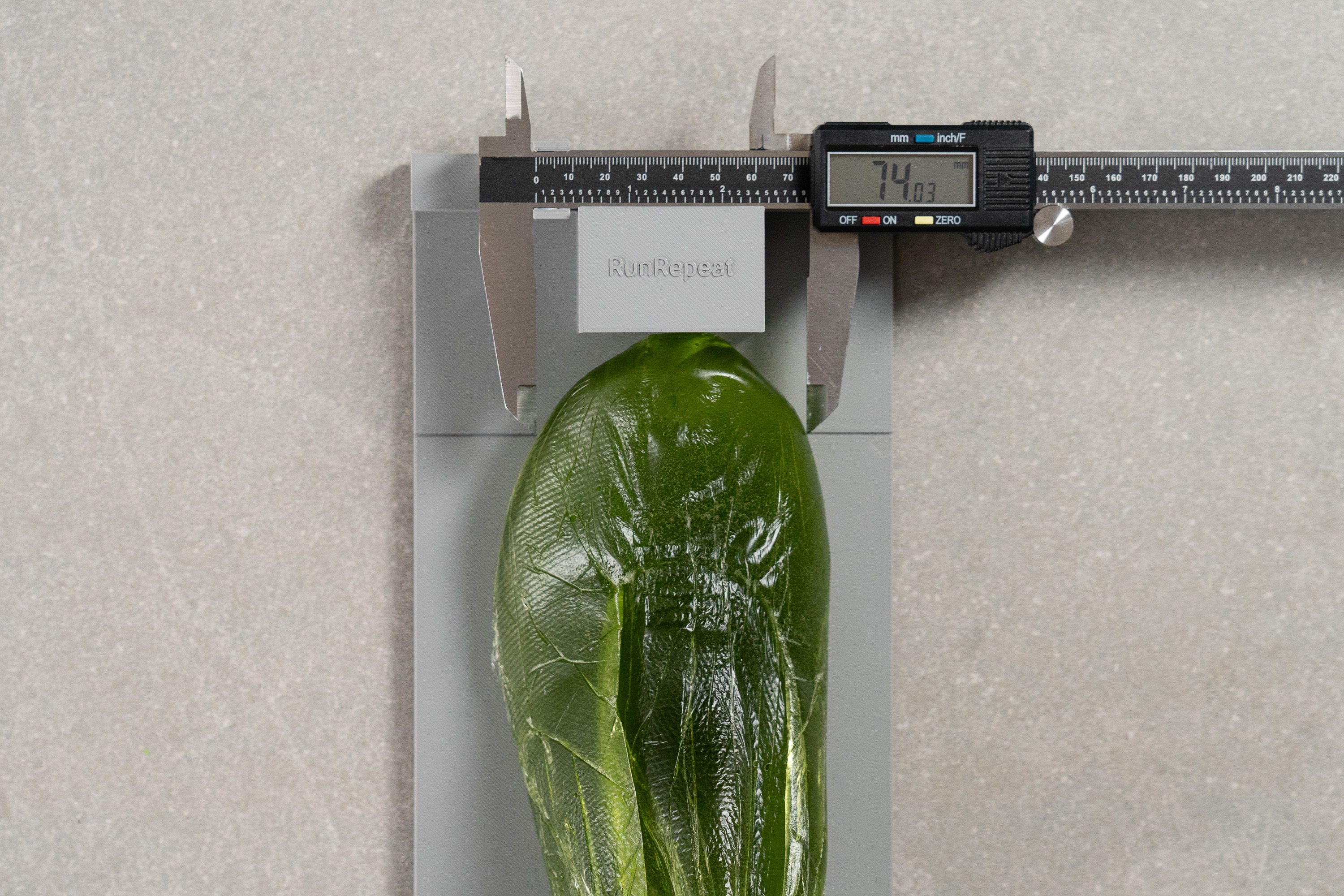
| X Ultra 4 GTX | 74.0 mm |
| Average | 72.5 mm |
Toebox height
The toebox height of this Salomon shoe is neither too high nor too low showing a standard reading of 27.2 mm on our caliper. This means sufficient vertical space for most hikers.
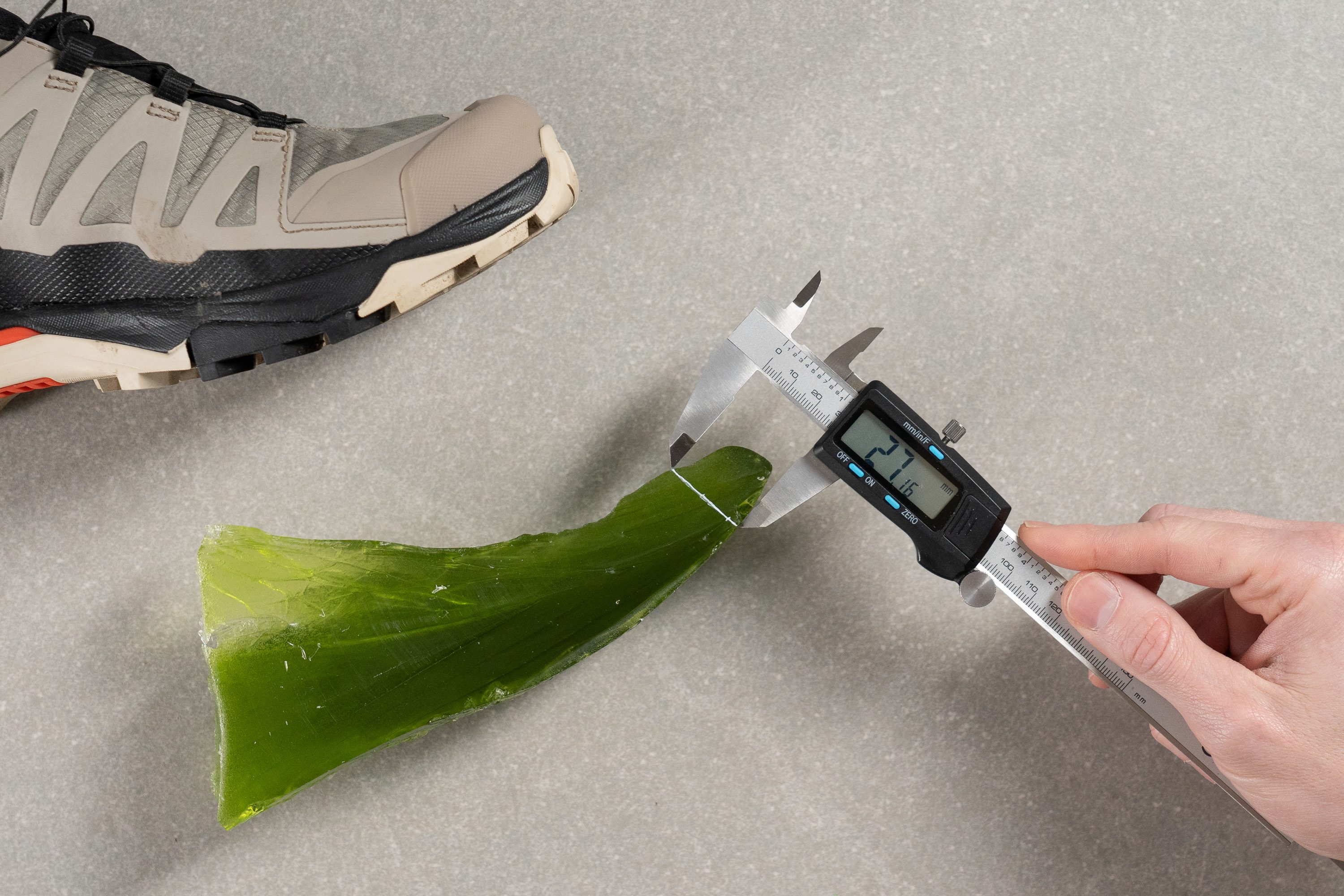
| X Ultra 4 GTX | 27.2 mm |
| Average | 28.0 mm |
Traction / Grip
Lug depth
Studded with 4.5 mm lugs, the X Ultra 4 GTX is a safe choice for varied terrain. You can go from loose gravel to soft woodland trails to even some mud and snow confidently in this pair.
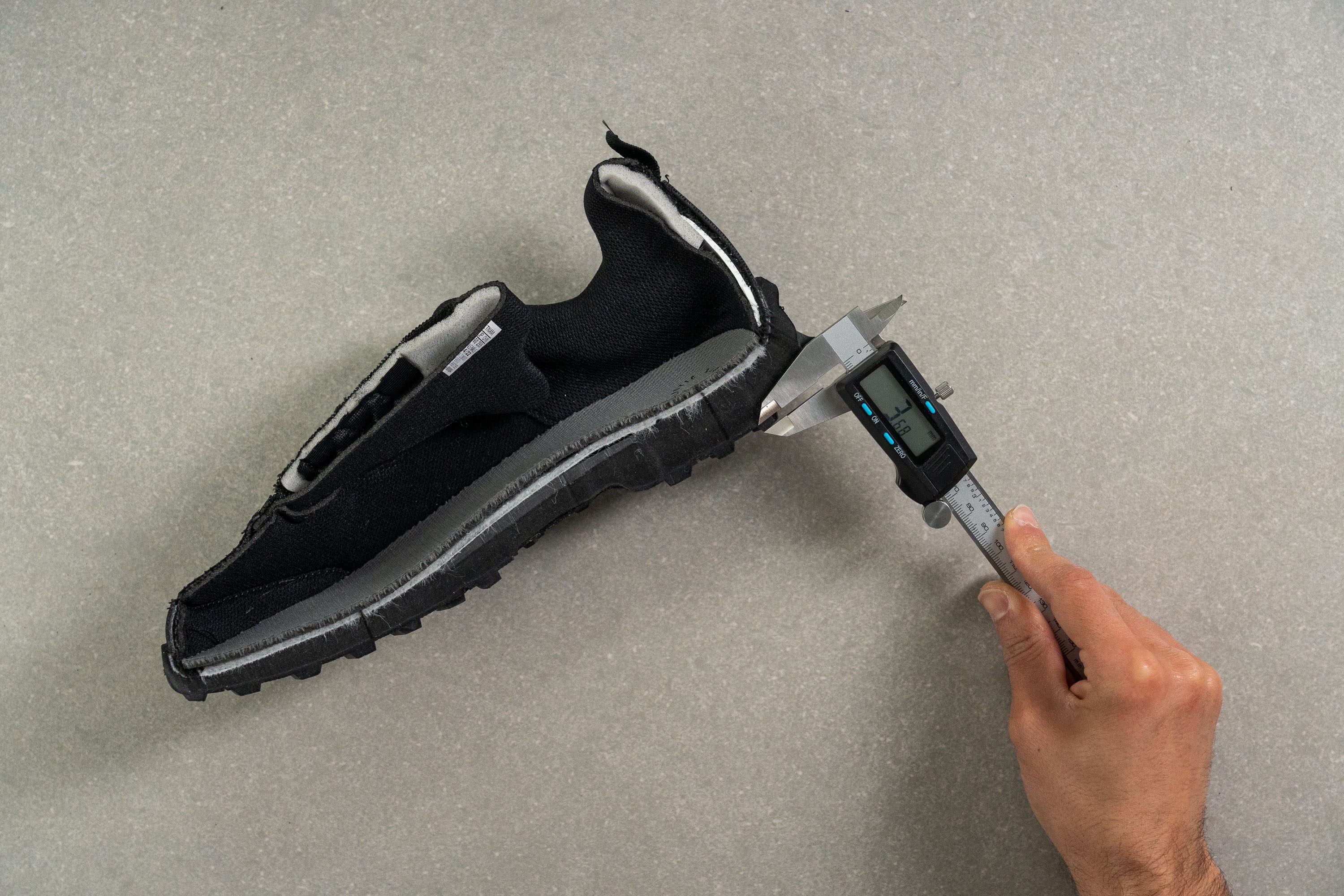
| X Ultra 4 GTX | 4.5 mm |
| Average | 4.0 mm |
Outsole design
Its aggressive multi-directional lugs and pronounced heel brake make this Salomon shoe feel reassuring on steep ascents and descents as well as on loose and unpredictable terrain.

Flexibility / Stiffness
We noticed a fine balance of stability and flex that the Salomon X Ultra 4 GTX achieved with the new chassis. We never felt restricted when bending our feet as the shoe still had sufficient flexibility.
Checking the shoe's resistance to bending, we found that the X Ultra 4 GTX is just a tad stiffer than hiking shoes on average. It took a moderate force of 20.9N to bend this Salomon shoe to a 30-degree angle.
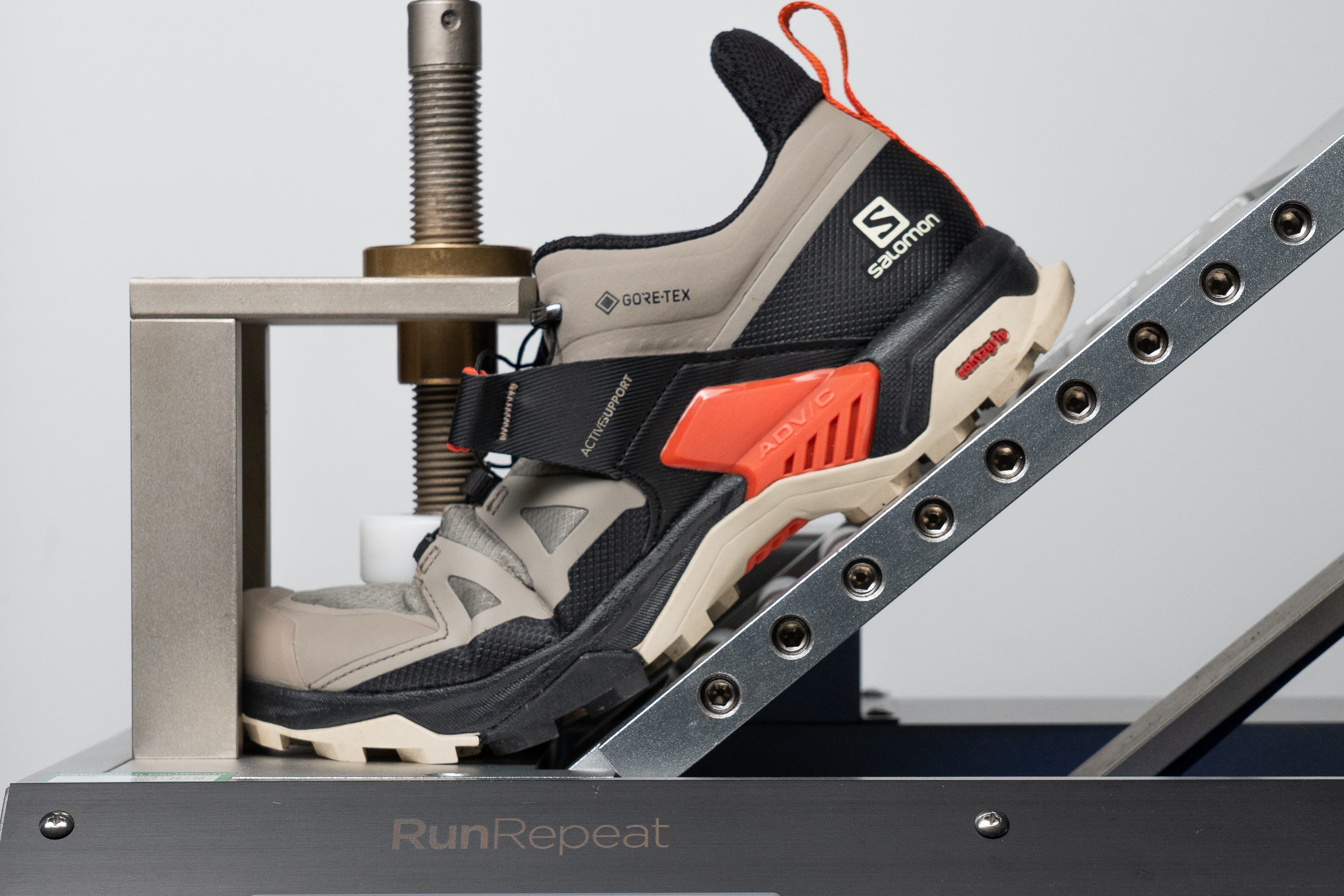
| X Ultra 4 GTX | 20.9N |
| Average | 18.3N |
Who should buy the Salomon X Ultra 4 GTX
Whether or not you have been a fan of Salomon’s X Ultra collection, this waterproof hiker can win you over with its multi-faceted engineering and modern design. The X Ultra 4 GTX is for you if you want:
- hiking footwear with the best waterproofing membrane
- shoes with deep lugs to tackle mixed and uneven terrain
- a sturdy pair of hiking shoes to power through demanding trails without resorting to a pair of hiking boots

Who should NOT buy the shoe
If you want a lower heel collar and a more traditional lacing system, we recommend opting for the Merrell Moab 3 GTX.
If you want a more breathable GTX hiking shoe, we can vouch for the Adidas Terrex Swift R3 GTX.
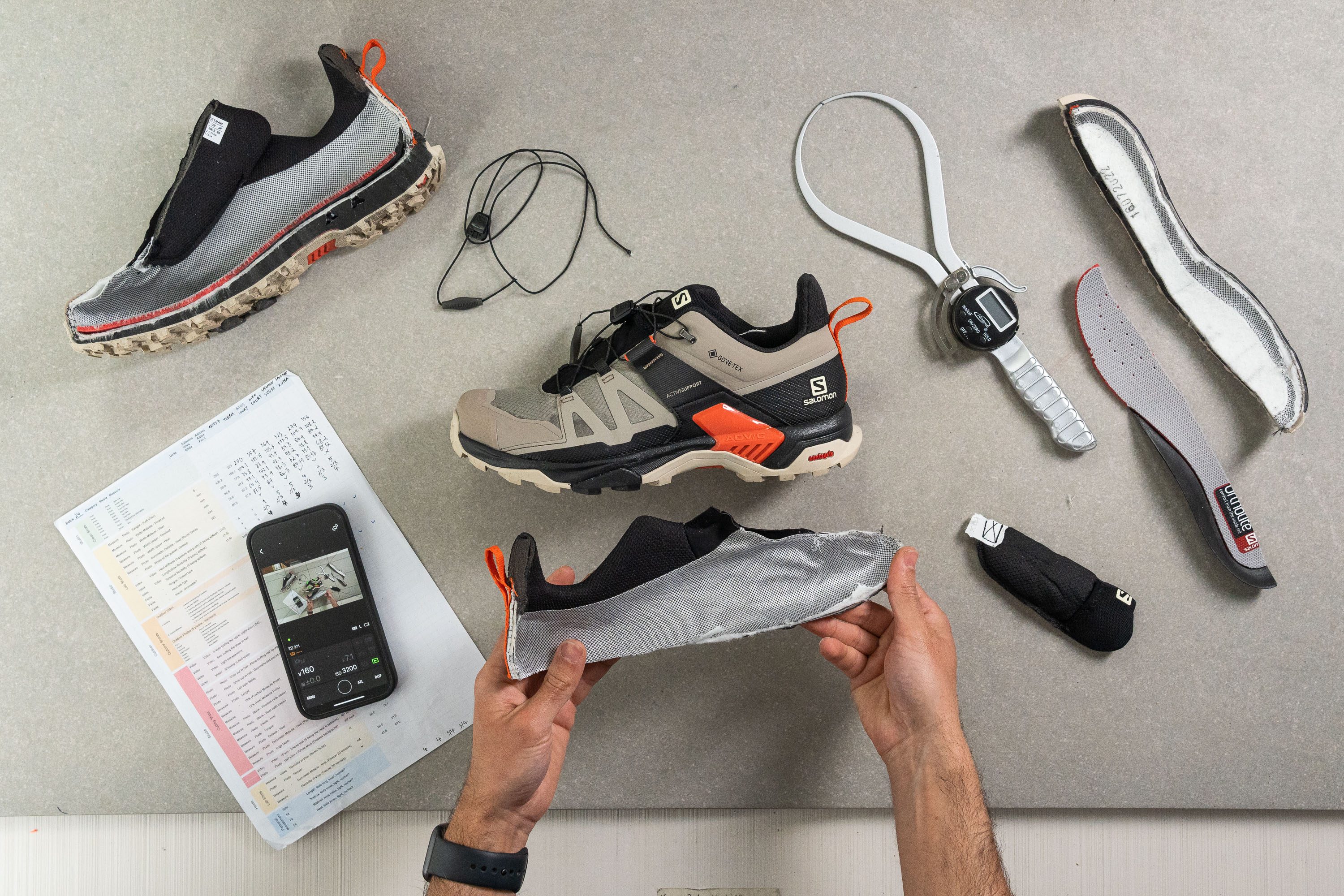
Salomon X Ultra 4 GTX: An enhanced successor
The 4th-gen X Ultra GTX directly picks up from where its predecessor left off. The most notable updates include the following:
Safer landings, smoother transitions. We discovered that the Ultra 4 helps you land on your heel more safely and make smoother transitions (almost like gliding) on rugged terrain.
Trimmed weight. We confirmed that the X Ultra 4 GTX is lighter than its predecessor by approximately 20 to 40 g a pair.
Better balance of stability and flexibility. The new chassis stiffens the midfoot zone of the shoe while giving the forefoot increased flexibility. Translation: You will get both solid balance and more toe-off control in the X Ultra 4 GTX.
Watertight upper for wet and cold conditions
We are very impressed with the waterproofing provided by this GTX hiking shoe. However, we still don't suggest choosing this shoe for warm weather due to its lack of breathability.
Pumping smoke through the shoe's toebox material, we rated its breathability as 1 out of 5 (the least breathable on our scale).
In addition, you can see how the shoe's upper does not let even a bit of light through.
Apart from the GTX membrane, the shoe uses a tightly woven textile with a durable water-repellent (DWR) coating. We learned that this helps seal out light rain and snow.
We took some microscope photos of the water-repellent textile.
The spaces between the weaves are barely present.
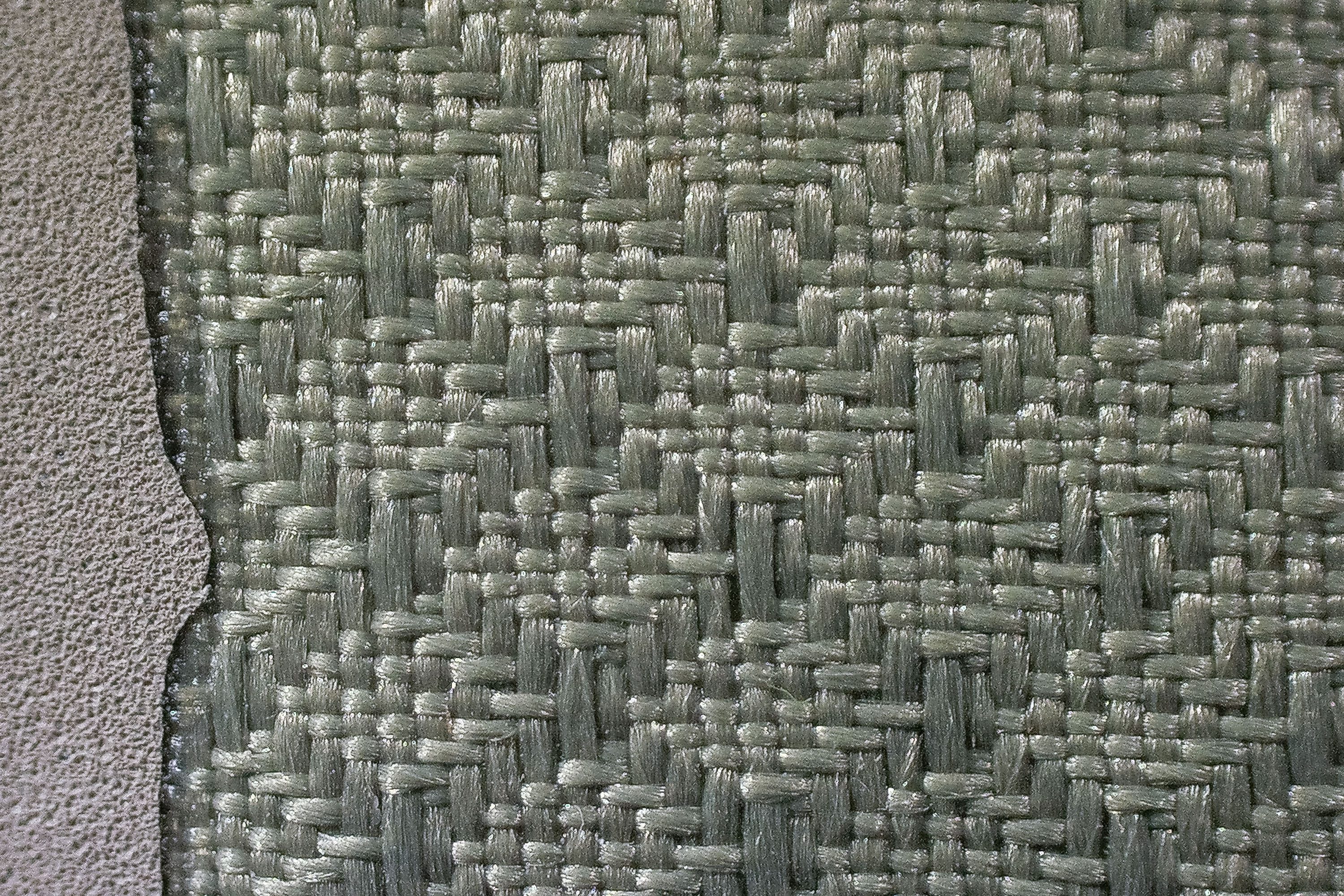

On the downside, we are against fully submerging the shoe into a puddle or a crossing, as we found that the water would get inside through the shoe mouth and it would take forever to dry because of the GTX.
If you anticipate stepping deeply into the water, consider the high-top version of the shoe.

And if you need an option for summer hikes, there is a non-waterproof iteration of the shoe as well.
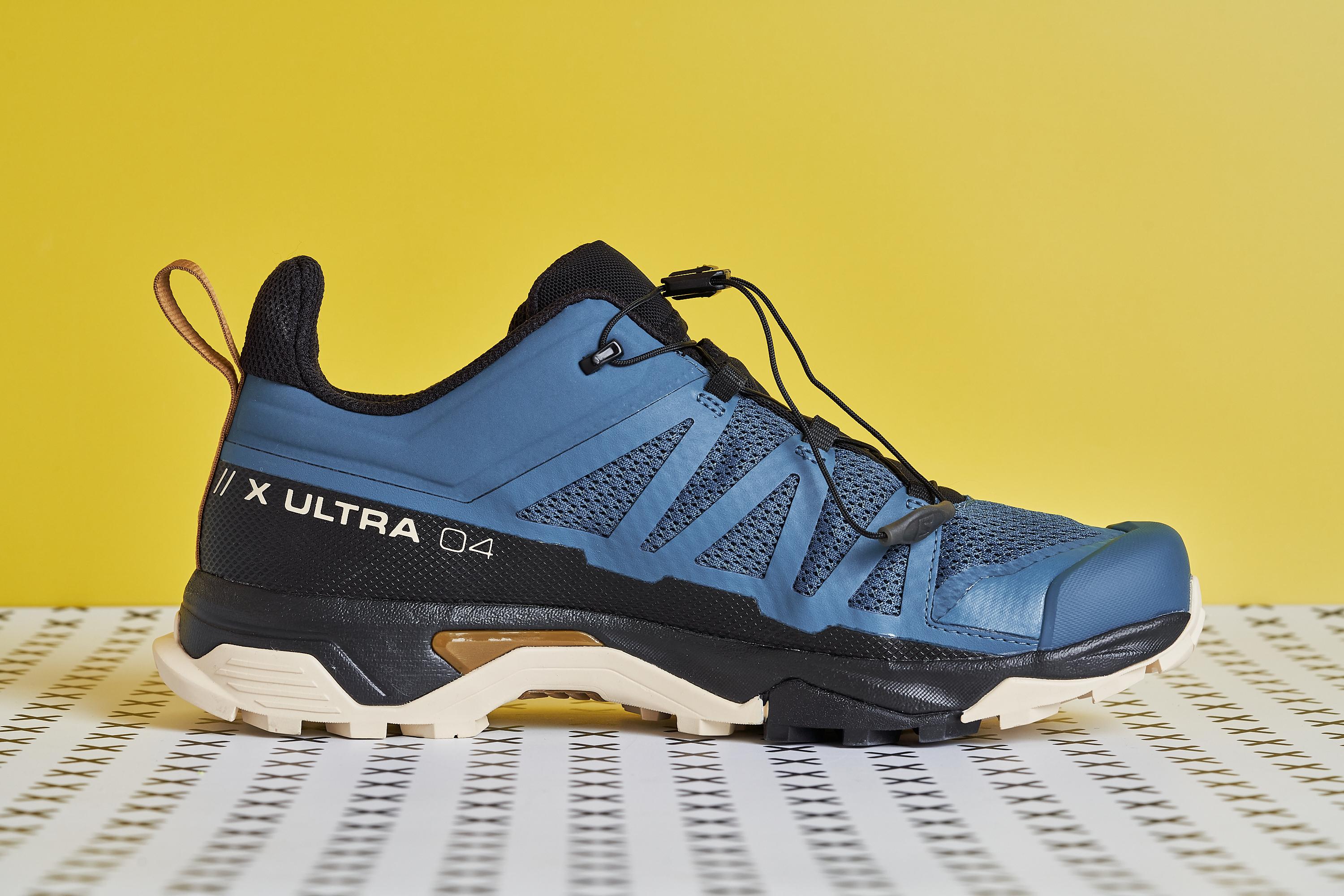
Cosy interiors
The Salomon X Ultra 4 GTX is immensely comfortable right from the get-go. We are particularly amazed by the shoe's super-comfy padding.
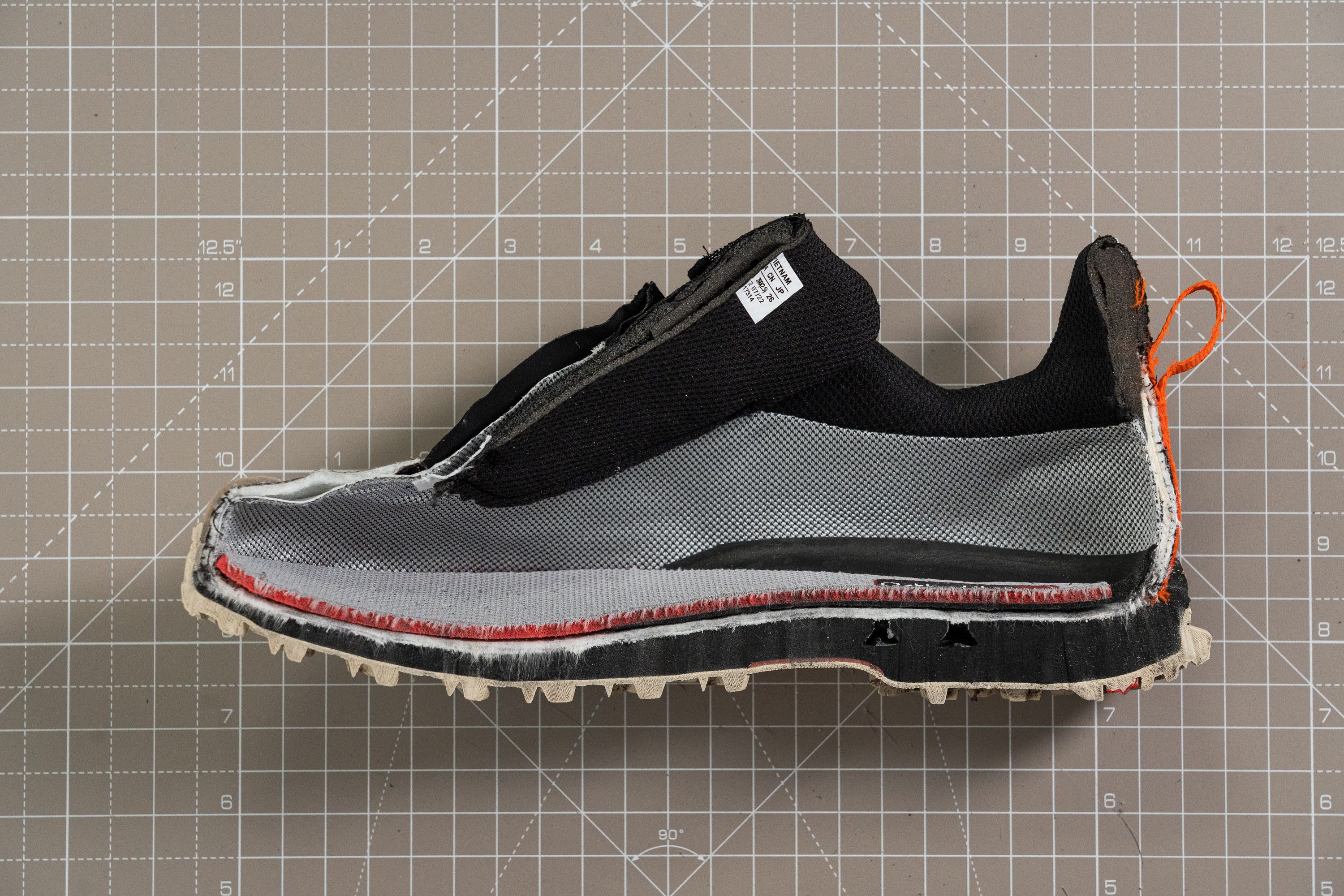
The tongue is well-padded without being too much. We measured its thickness at 9.4 mm which is thinner than the average 13.3 mm among hiking footwear.
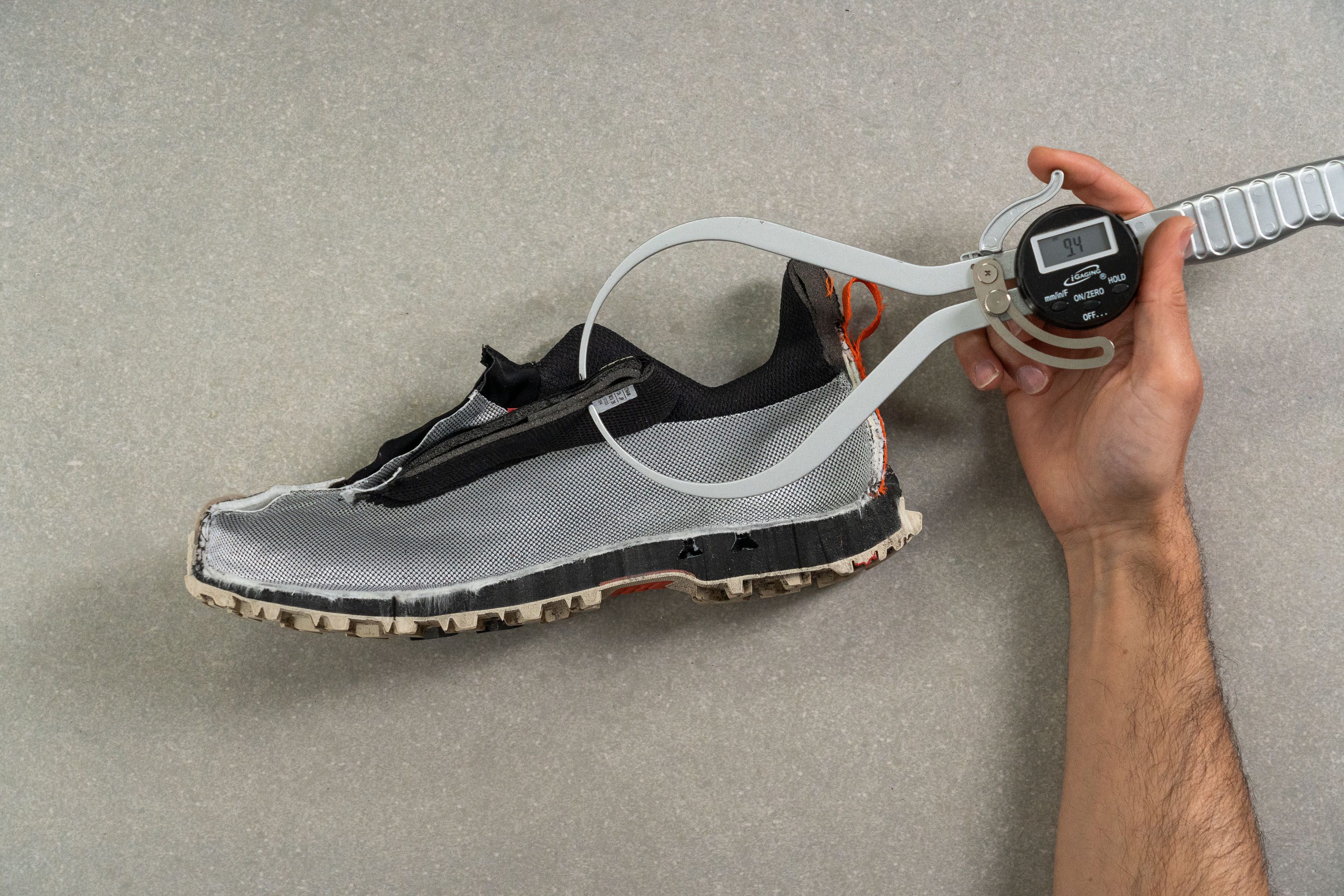
The upper is very sturdy, with thicker synthetic overlays adding support and protection in all the right places. It does not stretch at all.
The well-cushioned antimicrobial Ortholite insole also blew us away.

Measuring the insole thickness in its heel area, we found that it is 5.7 mm thick. This is an average thickness for hiking shoe insoles.
Clunkiness canceled
Its low weight makes it a real standout. We are stunned by how Salomon managed to pack so much support, protection, and grip into the lighter-than-average X Ultra 4 GTX.
The shoe weighs 13.3 oz (378g) while the average of waterproof hiking shoes is 14.4 oz (409g).
Extraordinary support system
Its heel zone gave us a mighty good sense of security.

In a manual assessment of the heel counter, we rated its stiffness as 5 out of 5 (the stiffest in our range). This typically translates to a firmer heel hold as well as increased stability.
Hit-or-miss lace management
Even though we appreciated how quick and easy it is to regulate the Quicklace system, there are moments when tucking the remainder of the shoestrings is a bit of a struggle.
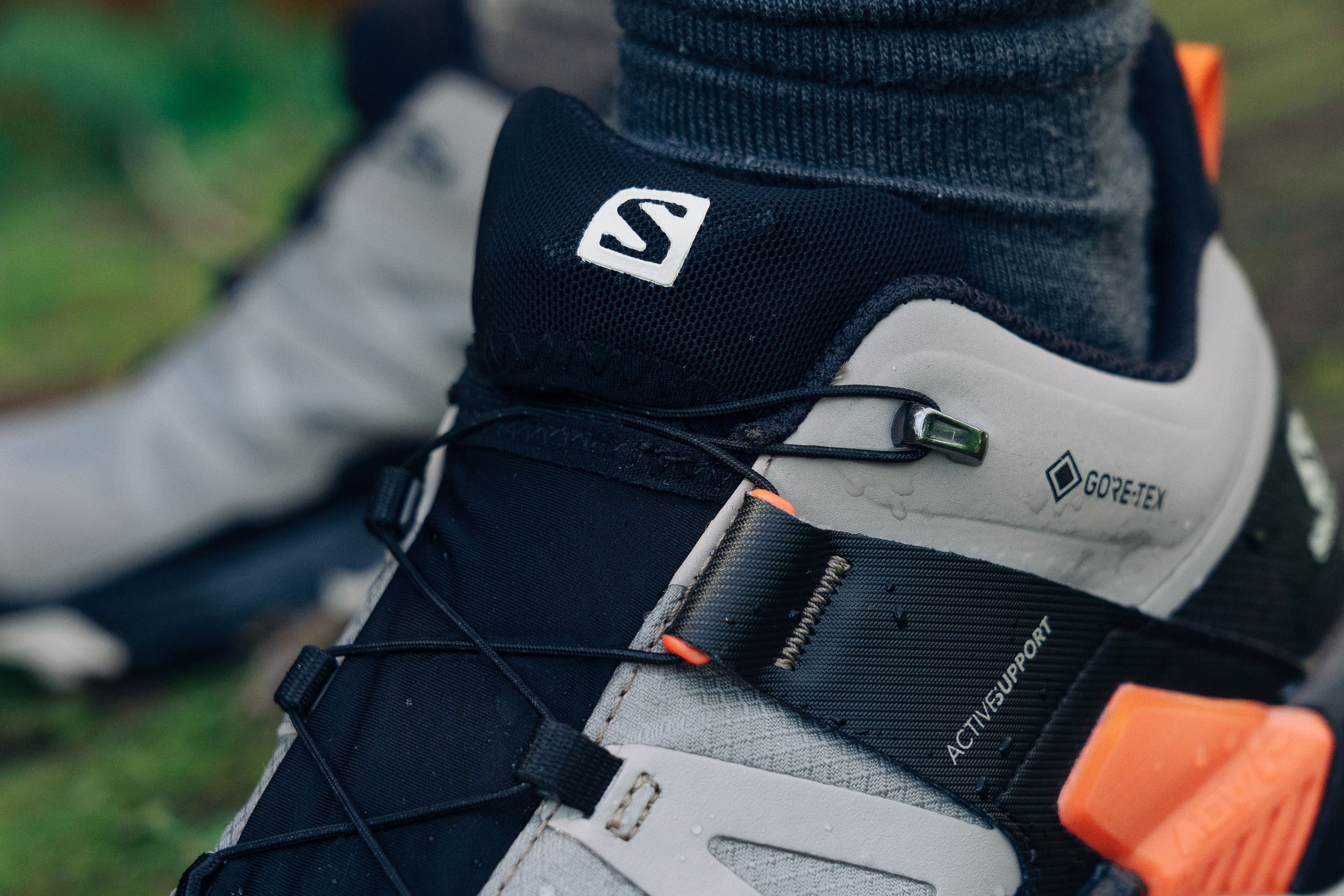
The sky-high clearance of the X Ultra 4 GTX
We are not entirely sold by the shoe's ankle cuff being too high—higher than the 3rd iteration's.

The stabilizing Salomon X Ultra 4 GTX
Upon testing the shoe on challenging terrains like rocky trails, steep downhills, and heavily rooted areas, we can verify the stable base provided by the Salomon X Ultra 4 GTX. We even felt confident hiking with a loaded backpacking pack.
Among the stability-enhancing factors, the shoe's Active Support system, as well as the wide sole, is what did it for us.
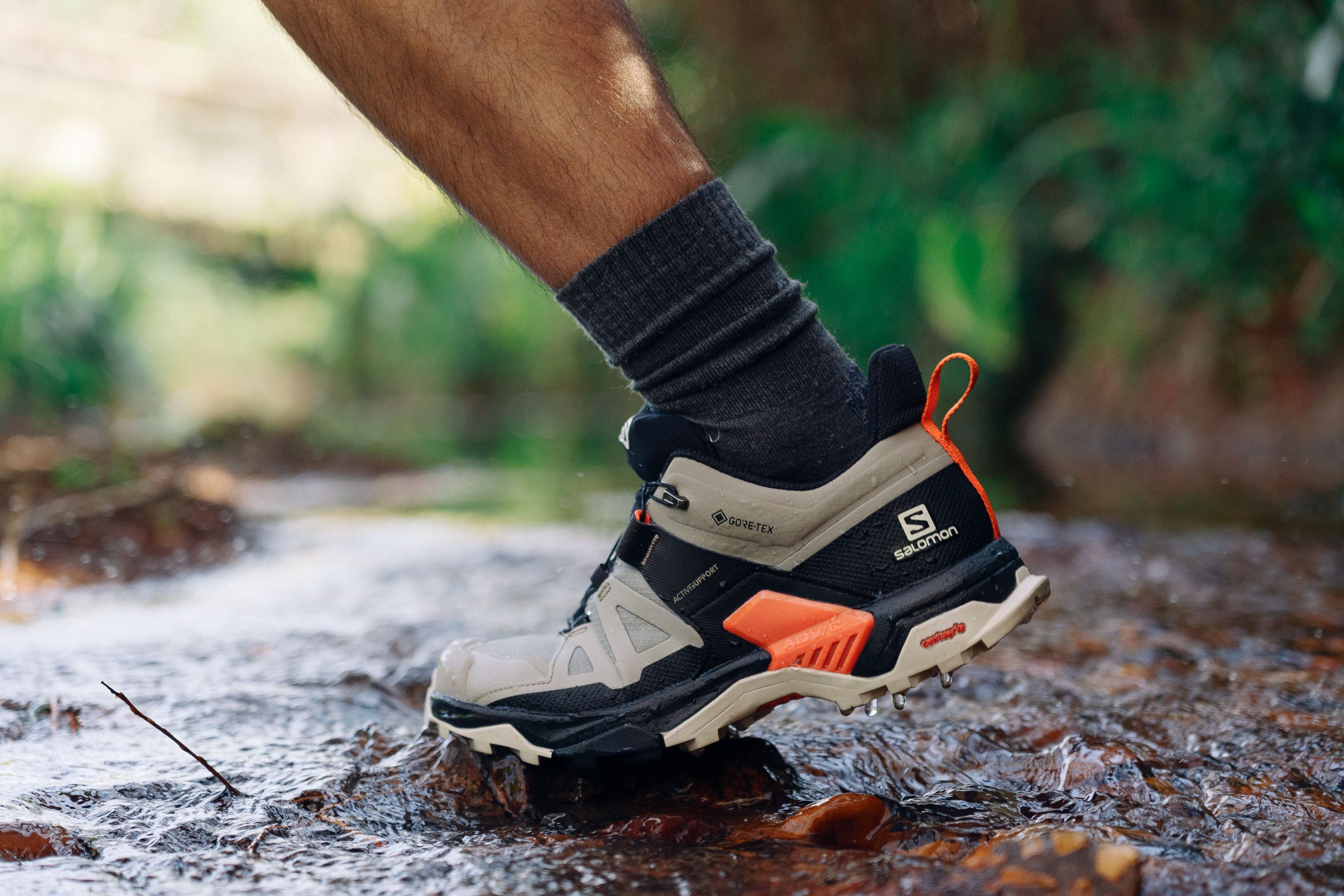
The wide and sturdy Active Support straps are interconnected with the lacing system to prevent ankle rolling at all times.
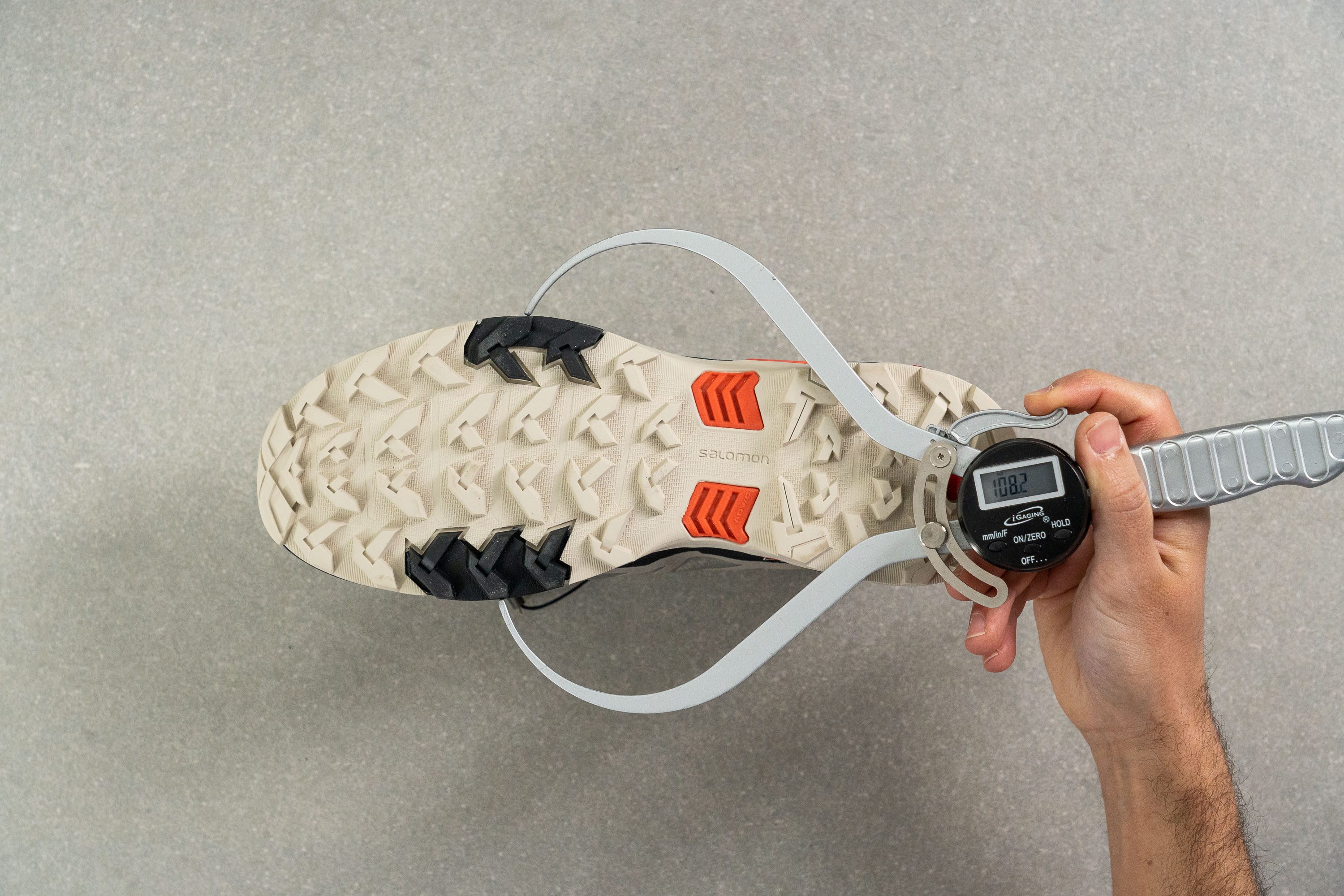
Measuring the sole in its widest parts, we found that it is 108.2 mm in the forefoot and 84.2 mm in the heel. This is not much wider than the averages of hiking shoes though: 107.7 mm and 85.3 mm respectively.
No sacrifices in flexibility
Backing up our lab test with a manual assessment, we rated the shoe's longitudinal and torsional flexibility as 3 out of 5 (where 5 is the stiffest).
But watch out for the chilly weather! Leaving the shoe outside overnight in low temperatures is going to make it noticeably stiffer. Then, you will have to break the shoe in to get that flexibility back.
After keeping the shoe in the freezer for 20 minutes, we measured its flexibility again. It got 75%(!) stiffer! This is way more than the increase in other hiking shoes (around 45%).
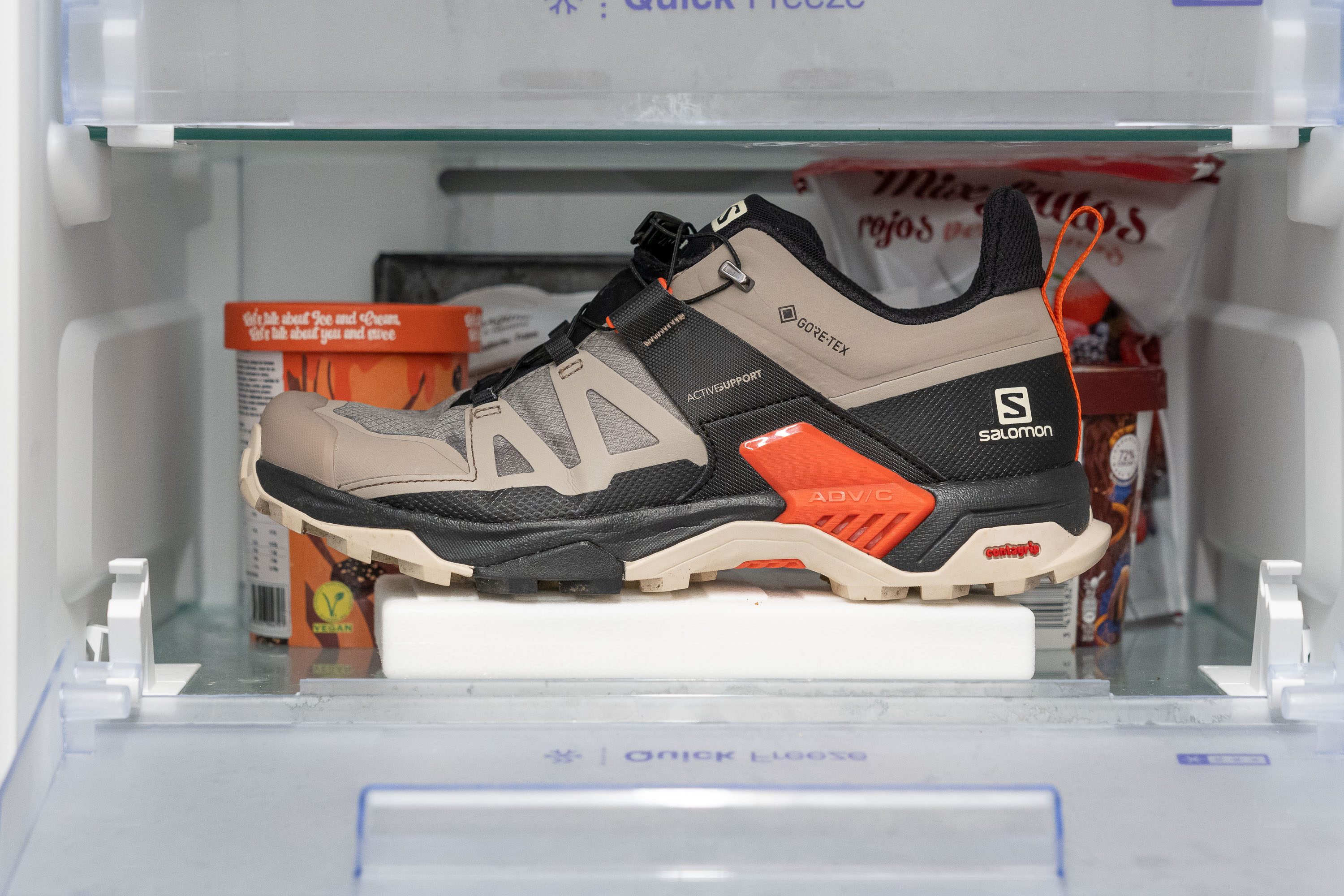
Stack and drop align with the brand specs
According to Salomon, the shoe's heel stack is 31.5 mm and its forefoot stack is 20.5 mm, making the heel-to-toe drop 11 mm.
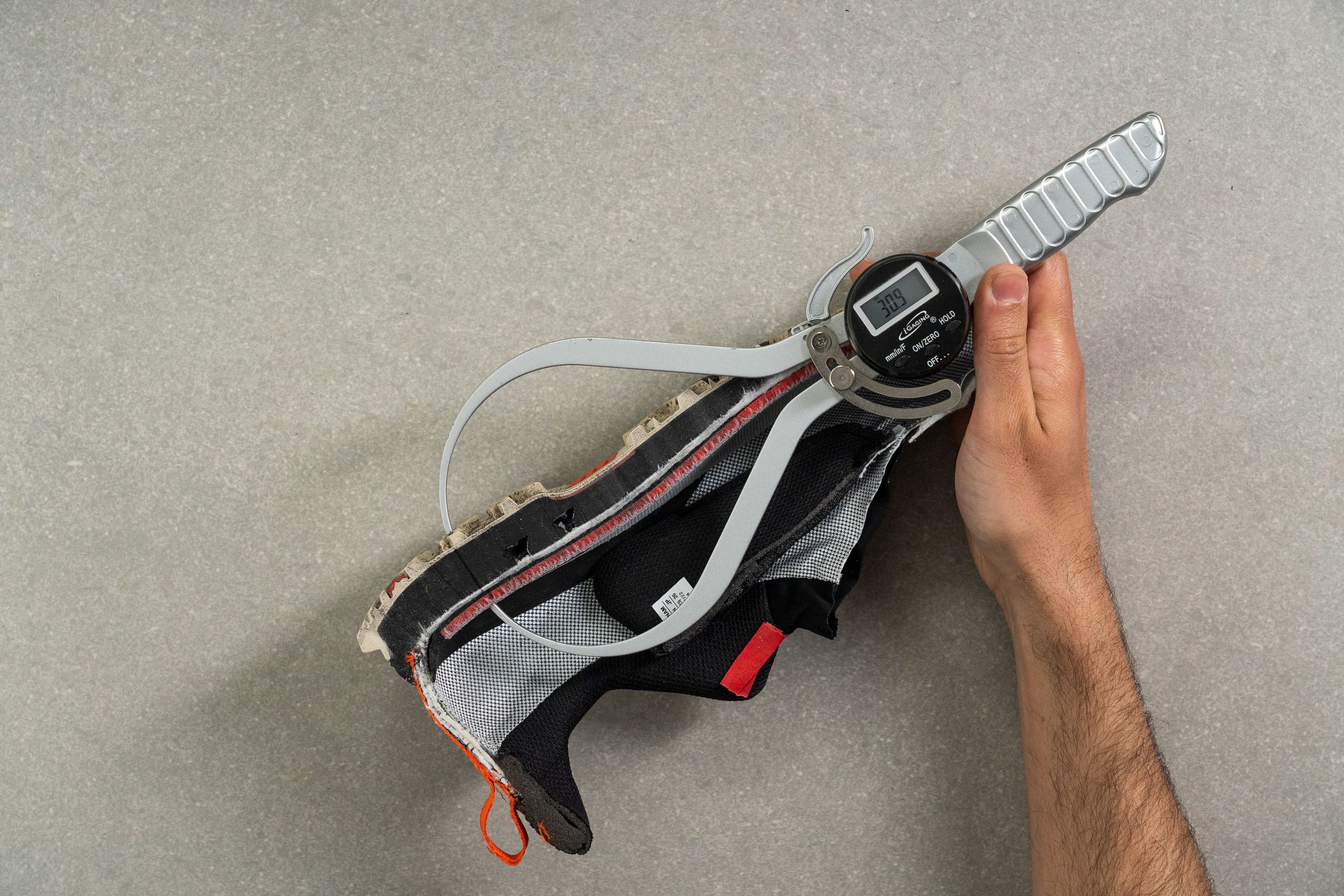
Using a pair of calipers, we measured the shoe's heel stack at 30.9 mm and its forefoot at 20.0 mm, giving us a 10.9-mm drop. The numbers are very close to those provided by Salomon.

Salomon finally takes care of wide feet
As we have worn the previous iteration of the X Ultra, we couldn't help but notice that the 4th edition came out with some extra space in the toe box.
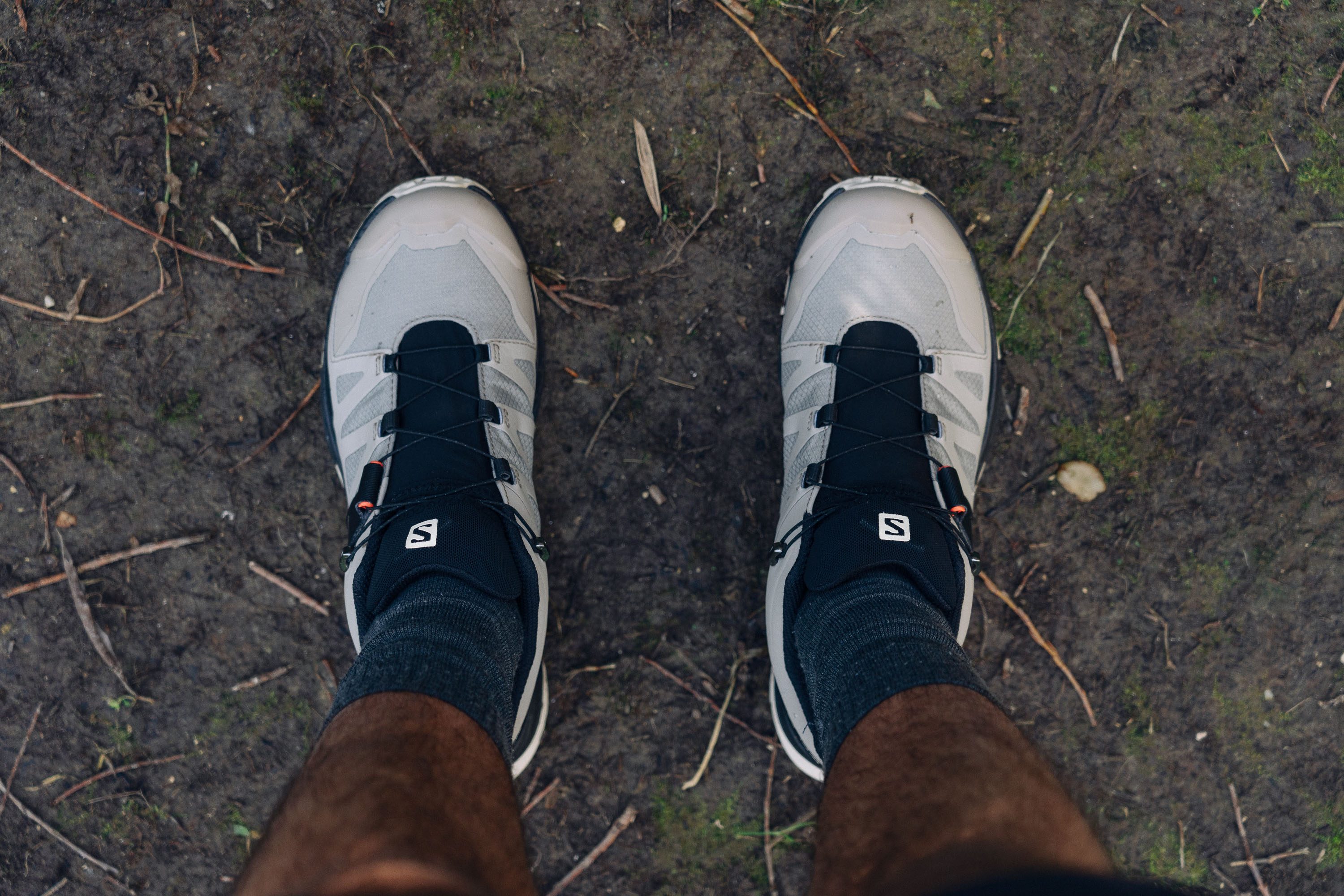
We measured the shoe's toebox width in two areas:
- the widest part: 99.9 mm (1 mm wider than average)
- the area around the toes: 79.2 mm (6.1 mm wider than average)
The fact that the toebox narrows less towards the toes than some other hiking shoes creates more toe room in the Salomon X Ultra 4 GTX. We can state that it got a big step closer to being wide-foot friendly. But it's still not there yet.
So, if you have wide feet, try getting this shoe in 2E - Wide.
